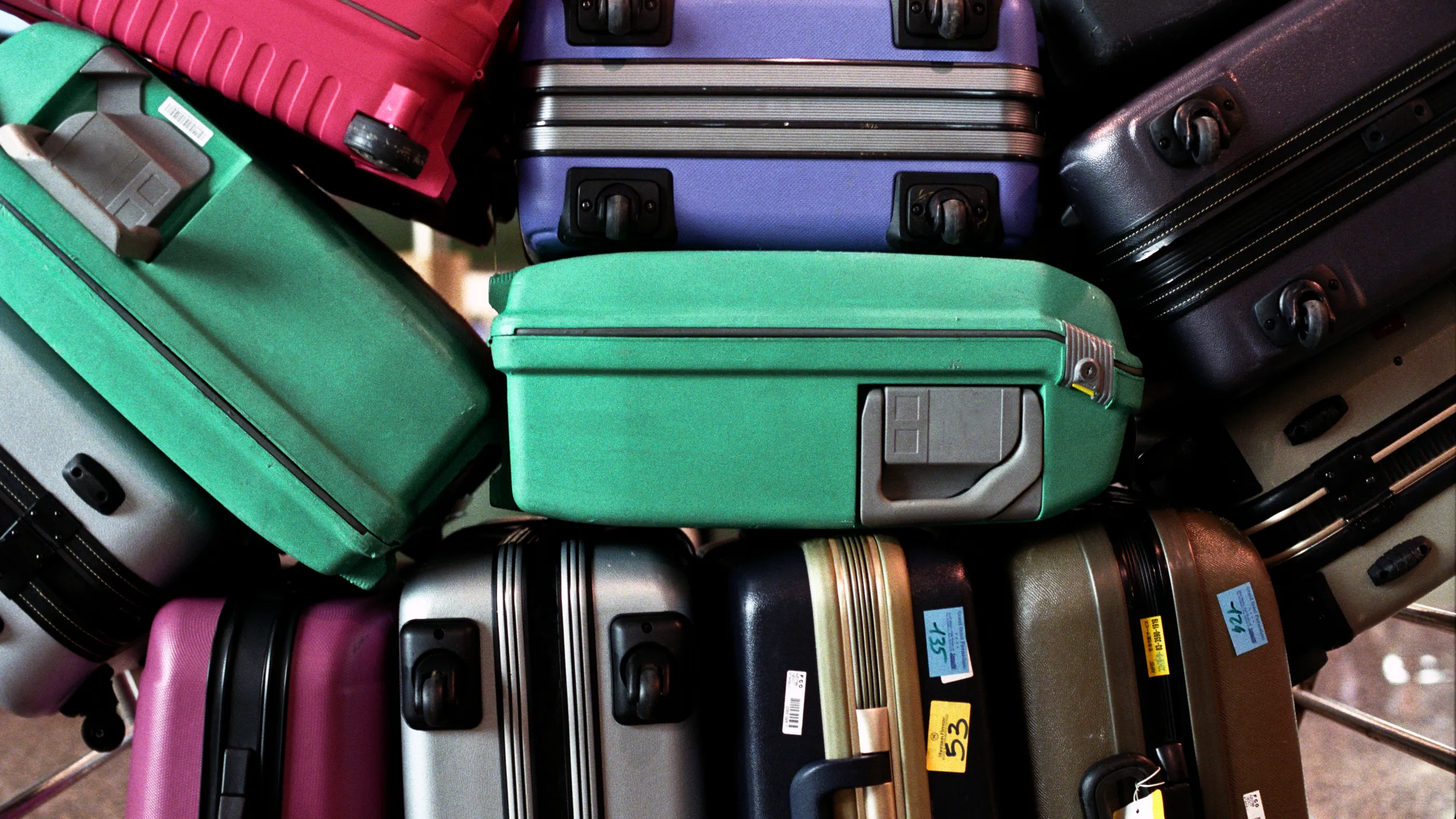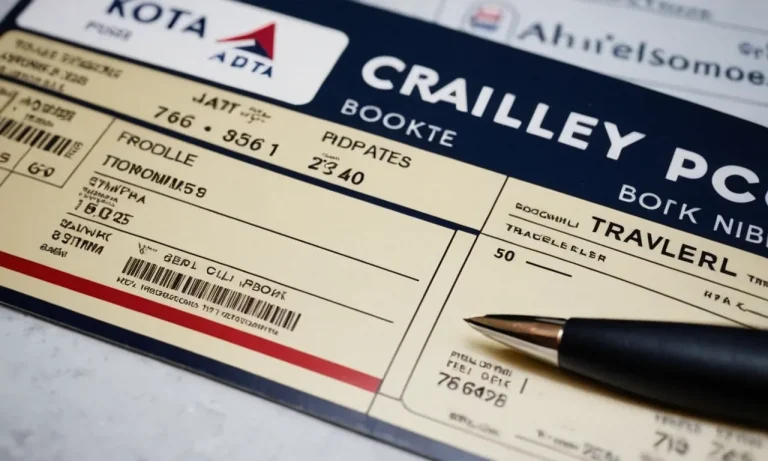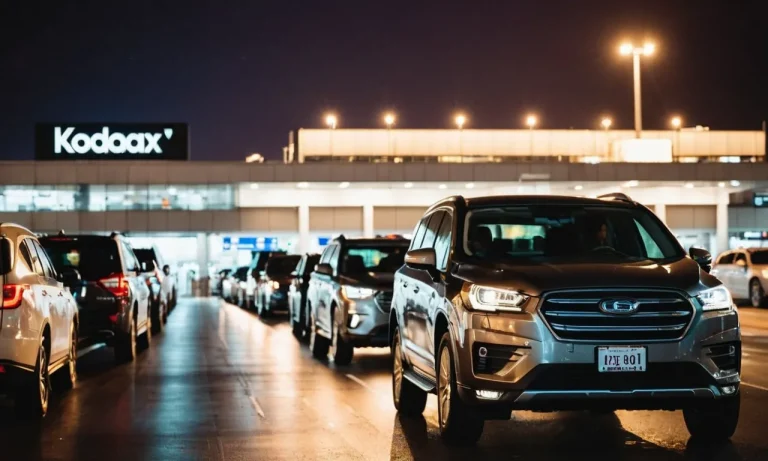If you’re taking a flight with connections, you may wonder – will my checked bags automatically be forwarded to my final destination?
If you’re in a hurry, the short answer is usually yes. Airlines will typically transfer your checked baggage to your final destination airport for you.
But there are some important caveats. Read on for a full explanation.
In this article, we’ll provide a complete overview of how checked baggage handling works on connecting flights.
We’ll cover key factors like booked tickets, baggage claims and transfers, airline baggage agreements, what to do if your luggage is missing, and tips for stress-free baggage handling when connecting.
Airlines Forward Checked Bags on Connecting Itineraries
One common concern among travelers with connecting flights is whether their checked baggage will be forwarded to their final destination.
The good news is that airlines have systems in place to ensure that your bags make it to where you need them to be.
Through-Check Baggage Policy
Airlines have what is known as a “through-check baggage” policy, which means that when you have a connecting itinerary with the same airline or with partner airlines, your checked bags will be automatically forwarded to your final destination.
This policy is in place to make your travel experience smoother and more convenient.
For example, if you are flying from New York to Paris with a layover in London and both flights are on the same airline or partner airlines, you can rest assured that your checked bags will be transferred from the first flight to the second without any action required from you.
Exceptions to the Through-Check Baggage Policy
While the through-check baggage policy is generally followed by airlines, there are a few exceptions to be aware of.
In some cases, you may need to collect your bags at the connecting airport and re-check them for your next flight. This usually happens when:
- You are flying with two different airlines that do not have a baggage agreement in place.
- Your layover is longer than a certain duration (this can vary depending on the airline and specific itinerary).
- Your connecting flights are in different terminals or airports.
It’s important to check with your airline or read the terms and conditions of your ticket to determine if any exceptions apply to your specific itinerary.
Tips for Smooth Baggage Transfers
To ensure that your checked bags are properly forwarded to your final destination, here are a few tips to keep in mind:
- Double-check your baggage tags: Before leaving the check-in counter, make sure that your bags are tagged with the correct destination airport code.
- Keep your baggage claim receipt: This receipt is essential for tracking your bags and claiming them if needed.
- Ask for confirmation: If you have any doubts about your bags being through-checked, don’t hesitate to ask the airline staff for confirmation.
- Allow sufficient layover time: If you have a tight connection, it’s always a good idea to allow for extra time in case of delays or unexpected issues.
By following these tips, you can have peace of mind knowing that your checked bags will be forwarded to your final destination, allowing you to focus on enjoying your journey.
Important Factors for Checked Bag Transfers
When it comes to traveling with checked baggage, there are important factors to consider to ensure your bags reach your final destination smoothly and hassle-free. In this guide, we will discuss two crucial factors that play a significant role in the transfer of your checked bags.
Booked as a Single Itinerary
One of the key factors for a seamless transfer of your checked baggage is to book your flights as a single itinerary. This means that if you have connecting flights, they should all be booked under one reservation.
When you book as a single itinerary, your bags are usually tagged with a final destination tag, making it easier for airlines to transfer them from one flight to another.
This reduces the chances of your bags getting lost or delayed during the transfer process.
Booking as a single itinerary also allows you to take advantage of certain benefits offered by airlines, such as through-checking your bags to your final destination, even if you have a layover.
This means that you won’t have to worry about collecting and re-checking your bags during your layover, as they will be automatically transferred to your next flight.
Airline Baggage Agreements
Another important factor to consider is the baggage agreements between airlines.
Many airlines have agreements in place that allow them to transfer your bags seamlessly, even if you are flying with different carriers. These agreements are known as interline or codeshare agreements.
Interline agreements enable airlines to transfer your bags to another airline without you having to collect and re-check them.
This is especially beneficial if you have connecting flights with different airlines.
It’s important to note that not all airlines have interline agreements with each other, so it’s wise to check with your airline or travel agent before booking your flights.
Codeshare agreements, on the other hand, allow multiple airlines to sell tickets for the same flight. This means that even if you book a flight with one airline, you may be flying on a plane operated by another airline.
In such cases, your bags are typically transferred seamlessly between the two airlines, thanks to their codeshare agreement.
It’s worth mentioning that while most airlines have baggage agreements in place, there may be exceptions or restrictions depending on the specific airlines involved.
It’s always a good idea to check the baggage policies and agreements of the airlines you will be flying with to ensure a smooth transfer of your checked bags.

The Baggage Claim and Transfer Process
After a long flight, the last thing you want to worry about is whether your checked baggage will make it to your final destination.
Understanding the baggage claim and transfer process can help alleviate any concerns you may have.
1. Baggage Claim Area
Once you arrive at your destination airport, proceed to the baggage claim area.
This is where you will retrieve your checked bags. Look for signs or monitors indicating the carousel number assigned to your flight.
Baggage carousels are typically labeled with flight numbers or city names to help passengers locate their bags easily.
Pro Tip: Take a picture of your luggage before checking it in. In case your bag gets lost or misplaced, you can provide a visual reference to the airline staff.
2. Baggage Transfer Process
If you have a connecting flight, your checked bags may need to be transferred from one flight to another. In most cases, airlines have systems in place to ensure a smooth transfer process.
However, it’s essential to confirm with airline staff if your bags will be automatically transferred or if you need to claim and recheck them at your layover airport.
Pro Tip: If you have a tight layover, it’s a good idea to inform the airline staff about your connection time. They may be able to prioritize your baggage transfer to ensure it reaches your next flight on time.
3. Customs and Immigration
Before leaving the baggage claim area, you may need to go through customs and immigration, depending on your destination.
These procedures are put in place to ensure compliance with customs regulations and to protect the country’s security.
Be prepared to present necessary documents and declare any items as required by the customs authorities.
Pro Tip: Familiarize yourself with the customs regulations of your destination country in advance to avoid any unexpected issues.
4. Baggage Delivery
Once you have cleared customs and immigration, proceed to the designated area where your baggage will be delivered.
In most cases, bags are placed on a separate carousel after the customs checkpoint. Look for signs or ask airport staff for directions if needed.
Pro Tip: Make your luggage easily identifiable by using distinctive luggage tags or colorful ribbons. This can help you spot your bags quickly and prevent others from accidentally taking them.
By understanding the baggage claim and transfer process, you can have peace of mind knowing that your checked bags will reach your final destination.
Remember to always check with your airline for specific instructions and any updates to their baggage policies.
What to Do if Your Checked Bag Doesn’t Arrive
It can be quite disheartening to arrive at your final destination, only to find out that your checked bag hasn’t made it with you.
While airlines strive to deliver baggage promptly, sometimes mishaps occur. If you find yourself in this situation, here are some steps you can take to resolve the issue:
1. Report the missing bag
As soon as you realize that your checked bag hasn’t arrived, head to the airline’s baggage claim office or speak to a representative at the airport.
They will guide you through the process of reporting the missing bag.
Make sure to provide them with your contact information and a detailed description of your bag, including any unique identifiers like stickers or ribbons.
2. Fill out a Property Irregularity Report (PIR)
The airline will ask you to fill out a Property Irregularity Report (PIR) to officially document the missing bag.
This report will help the airline track and locate your bag. Be sure to keep a copy of the report for your records.
3. Provide proof of ownership
If you have any valuable items in your missing bag, it’s important to have proof of ownership.
This can include receipts, photographs, or any other documentation that verifies the value of the items. This will be useful for filing a claim if necessary.
4. Stay in contact with the airline
After reporting your missing bag, stay in contact with the airline for updates on its status.
You can provide them with your contact information and ask for a reference number to track the progress of your bag’s retrieval.
Most airlines have online tracking systems where you can check the status of your bag using the reference number.
5. Keep your travel essentials with you
While waiting for your bag to be located, make sure to keep all your essential items with you in your carry-on luggage.
This includes medications, important documents, electronic devices, and a change of clothes. It’s always a good idea to pack a spare set of clothes in your carry-on, just in case.
6. Understand your rights and compensation options
Each airline has its own policies regarding lost or delayed baggage. Familiarize yourself with these policies and understand your rights as a passenger.
In some cases, you may be entitled to compensation for the inconvenience caused by the missing bag.
Check the airline’s website or contact their customer service for more information.
Remember, while it can be frustrating to deal with a missing bag, airlines do their best to reunite you with your belongings as quickly as possible.
By following these steps and staying proactive, you can increase the chances of a successful resolution.
Tips for Stress-Free Baggage Handling on Connections
Check Baggage Policies
One of the first things you should do when planning a trip with connections is to familiarize yourself with the baggage policies of the airlines you will be flying with.
Each airline may have different rules and restrictions regarding the number of bags, weight limits, and fees.
Confirm Transfers
When booking your flight, it’s crucial to ensure that your checked baggage will be automatically transferred to your final destination.
Some airlines have agreements with partner airlines or alliances, which allow for seamless baggage transfers.
However, this is not always the case, especially when flying with different airlines.
It is essential to confirm with the airline representative or check the airline’s website to determine if you need to collect your baggage during layovers and recheck it for your connecting flight.
Leave Time for Transfers
Leaving a sufficient amount of time between connecting flights is vital to ensure that your baggage gets transferred smoothly.
It is recommended to have at least a two-hour layover, especially when traveling internationally or if you have to change terminals.
This extra time allows for any unexpected delays, such as a late arrival or long security lines. Additionally, it gives the baggage handlers enough time to transfer your luggage to the correct aircraft.
Remember, rushing through an airport can increase the chances of your checked baggage not making it to your final destination on time.
Conclusion
In summary, airlines will typically transfer checked baggage automatically between connecting flights booked on one itinerary.
But mishandlings can occur, so confirm policies and transfers when booking, leave ample connection time, and know what to do if your luggage goes astray.
With the right information, connecting flights don’t have to mean baggage headaches.






